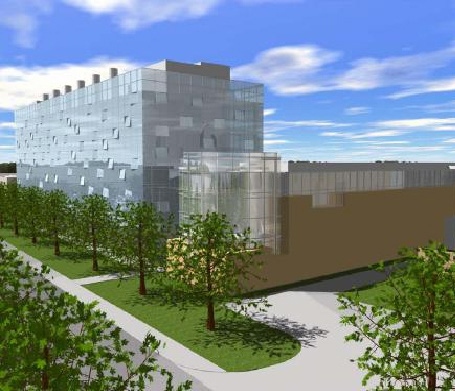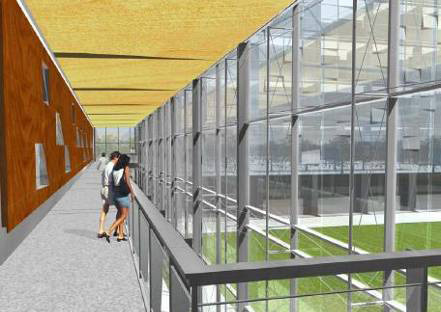New Advanced Chemical Technology Building – Pursuing LEED Silver
The new Advanced Chemical Technologies Building (ACTB) Laboratory facility supports collaboration of 180 principal investigators and graduate students in organic chemistry, biochemistry and chemical science; biophysics and physical chemistry; neuroscience; nanoscience/materials science; and laser dynamics.
Future growth and space flexibility was a component of the MEP design. The mechanical design includes custom air handling units with fan array and energy recovery, local chillers to accommodate year round process cooling needs when campus chilled water is not available, dedicated process cooling loops, chilled beams for sensible cooling in laboratories, separate fume and general lab exhaust systems, and emergency mercury exhaust. The building contains approximately 5,000-sf of ISO 6-7 cleanrooms. Two different types of energy recovery are utilized. Enthalpy wheels are used to recover energy from the general lab exhaust and a glycol-water loop is used to recover energy from the fume exhaust.
The electrical design for the building includes a connection to the campus medium voltage electrical loop using dual feeders supplying a double-ended unit substation. An onsite generator will power life safety, fire pump, laboratory exhaust and make-up air, elevators, heating system, additional critical mechanical loads, technology, and critical laboratory loads in the event of a loss of normal power.
Sustainable MEP design features include energy recovery, chilled beams for supplemental cooling in laboratories, fan array, condenser water heat recovery, LED lighting, daylighting controls, dimming/multilevel switching, and vacancy sensors.
In addition to flexible lab space including cleanroom designs, the building houses office, conference, and seminar space to support the research activities as well as other lab support and building support components.









